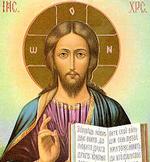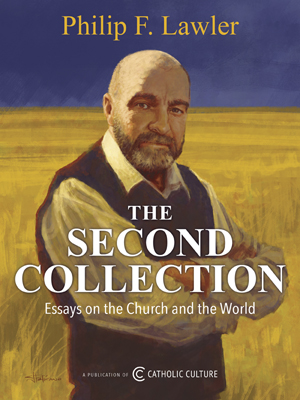Catechism of the Catholic Church
559 How will Jerusalem welcome her Messiah? Although Jesus had always refused popular attempts to make him king, he chooses the time and prepares the details for his messianic entry into the city of "his father David". 308 Acclaimed as son of David, as the one who brings salvation (Hosanna means "Save!" or "Give salvation!"), the "King of glory" enters his City "riding on an ass". 309 Jesus conquers the Daughter of Zion, a figure of his Church, neither by ruse nor by violence, but by the humility that bears witness to the truth. 310 And so the subjects of his kingdom on that day are children and God's poor, who acclaim him as had the angels when they announced him to the shepherds. 311 Their acclamation, "Blessed be he who comes in the name of the Lord", 312 is taken up by the Church in the "Sanctus" of the Eucharistic liturgy that introduces the memorial of the Lord's Passover.
560 Jesus' entry into Jerusalem manifested the coming of the kingdom that the King-Messiah was going to accomplish by the Passover of his Death and Resurrection. It is with the celebration of that entry on Palm Sunday that the Church's liturgy solemnly opens Holy Week.
IN BRIEF:
561 "The whole of Christ's life was a continual teaching: his silences, his miracles, his gestures, his prayer, his love for people, his special affection for the little and the poor, his acceptance of the total sacrifice on the Cross for the redemption of the world, and his Resurrection are the actualization of his word and the fulfilment of Revelation" John Paul II, CT 9).
562 Christ's disciples are to conform themselves to him until he is formed in them (cf. Gal 4:19). "For this reason we, who have been made like to him, who have died with him and risen with him, are taken up into the mysteries of his life, until we reign together with him" (LG § 4).
563 No one, whether shepherd or wise man, can approach God here below except by kneeling before the manger at Bethlehem and adoring him hidden in the weakness of a new-born child.
564 By his obedience to Mary and Joseph, as well as by his humble work during the long years in Nazareth, Jesus gives us the example of holiness in the daily life of family and work.
565 From the beginning of his public life, at his baptism, Jesus is the "Servant", wholly consecrated to the redemptive work that he will accomplish by the "baptism" of his Passion.
566 The temptation in the desert shows Jesus, the humble Messiah, who triumphs over Satan by his total adherence to the plan of salvation willed by the Father.
567 The kingdom of heaven was inaugurated on earth by Christ. "This kingdom shone out before men in the word, in the works and in the presence of Christ" (LG 5). The Church is the seed and beginning of this kingdom. Its keys are entrusted to Peter.
568 Christ's Transfiguration aims at strengthening the apostles' faith in anticipation of his Passion: the ascent on to the "high mountain" prepares for the ascent to Calvary. Christ, Head of the Church, manifests what his Body contains and radiates in the sacraments: "the hope of glory" (Col 1:27; cf.: St. Leo the Great, Sermo 51, 3: PL 54, 310C).
569 Jesus went up to Jerusalem voluntarily, knowing well that there he would die a violent death because of the opposition of sinners (cf. Heb 12:3).
570 Jesus' entry into Jerusalem manifests the coming of the kingdom that the Messiah-King, welcomed into his city by children and the humble of heart, is going to accomplish by the Passover of his Death and Resurrection.
Notes:
English Translation of the Cathechism of the Catholic Church for the United States of America © 1997, United States Catholic Conference, Inc.






